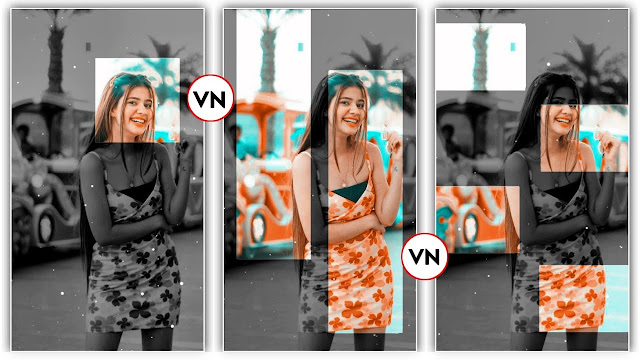Introduction:-
In this digital age, video editing has become an essential skill for creators and enthusiasts alike. With the rise of social media platforms, the demand for captivating and engaging content has skyrocketed. One popular video editing style that has gained significant attention is the 3D viral Lo-Fi status video. In this tutorial, we will explore the techniques and creative processes involved in creating mesmerizing Lo-Fi style viral videos. So, grab your editing software and let’s dive into the world of 3D viral Lo-Fi status video editing in VN!
Understanding the Lo-Fi Style
What is Lo-Fi Style? Lo-Fi, short for low fidelity, refers to a style that deliberately introduces imperfections into the audio or visual elements of a creative work. In the context of video editing, the Lo-Fi style involves creating a vintage and retro aesthetic that emulates the characteristics of old analog recordings. It often incorporates grainy textures, faded colors, and nostalgic vibes, evoking a sense of warmth and familiarity.
Characteristics of Lo-Fi Videos Lo-Fi videos typically exhibit specific traits that make them stand out. These characteristics include:
- Vintage film overlays
- Analog glitches and distortions
- Dust and scratches
- Vignettes and light leaks
- Retro fonts and graphics
2. Preparing Your Project
Gathering Footage:
To create a captivating Lo-Fi video, you’ll need to gather suitable footage that aligns with the desired aesthetic. Look for clips with vintage elements, urban scenery, and nostalgic visuals. Consider incorporating shots of record players, cassette tapes, old cameras, or bustling city streets. Websites offering royalty-free stock footage can be a great resource for finding suitable clips.
Choosing the Right Music:
The music you select plays a crucial role in setting the tone and atmosphere of your Lo-Fi video. Look for tracks with mellow beats, soothing melodies, and vinyl crackling effects. Explore online music libraries or platforms dedicated to Lo-Fi music to find the perfect soundtrack for your video.
3. Setting Up Your Timeline
Importing Footage and Audio:
Start by importing your footage and audio files into your preferred video editing software. Create a new project and organize your files in a structured manner. This will help you easily locate and access the assets during the editing process.
Organizing Your Assets:
Create separate folders or bins within your project for different types of media, such as video clips, audio files, and graphics. Arrange them systematically to streamline your workflow and ensure a smooth editing experience. Consider labeling each file appropriately for quick identification.
4. Applying Effects and Transitions
Creating the Vintage Look:
To achieve the vintage aesthetic, apply filters and effects that mimic the characteristics of old film recordings. Experiment with grain overlays, color grading presets, and film grain filters to achieve the desired look. Adjust the intensity of these effects to strike a balance between nostalgia and visual clarity.
Utilizing Overlays and Glitches:
To add depth and visual interest to your Lo-Fi video, consider incorporating overlays and glitches. Overlay vintage film textures, light leaks, or dust and scratches to create an authentic retro feel. Experiment with glitch effects to introduce digital imperfections and simulate the look of old analog technology.
5. Adding Text and Graphics
Enhancing Your Storytelling:
Incorporate text and graphics strategically to enhance your storytelling. Use title cards, lower thirds, or animated text to introduce different sections or highlight important elements in your video. Ensure that the chosen fonts and styles align with the overall Lo-Fi aesthetic.
Incorporating Subtitles and Captions:
If your video includes dialogue or narration, consider adding subtitles or captions. This will make your content more accessible to a wider audience. Choose fonts that are easily readable and experiment with subtle effects to maintain visual cohesiveness.
6. Mastering Color Grading
Creating the Lo-Fi Aesthetic:
Color grading plays a vital role in establishing the Lo-Fi look. Experiment with desaturated and faded tones to create a vintage vibe. Adjust the color temperature to evoke warmth or coolness, depending on the mood you want to convey. Pay attention to the highlights, shadows, and mid-tones to strike the right balance and achieve the desired Lo-Fi aesthetic.
Adjusting Saturation and Contrast:
To further enhance the Lo-Fi style, manipulate the saturation and contrast levels. Reduce the saturation slightly to create a muted and washed-out effect. Experiment with contrast to achieve a balanced and visually appealing look. Keep in mind that subtlety is key to maintaining the authenticity of the Lo-Fi style.
7. Implementing 3D Effects
Understanding Depth and Perspective:
To add visual depth to your Lo-Fi video, incorporate 3D effects. Create a sense of perspective by positioning different elements at varying distances from the viewer. Experiment with camera movements, parallax effects, and depth of field to simulate a three-dimensional environment.
Adding Depth of Field and Parallax:
Utilize depth of field to draw attention to specific subjects or create a sense of focus within your video. Blur the background or foreground elements to emphasize the main subject. Additionally, apply parallax effects to add motion and depth by creating the illusion of different layers moving independently.
8. Enhancing with Sound Design
Incorporating Ambient Sounds:
To enhance the immersive experience of your Lo-Fi video, incorporate ambient sounds that align with the visuals. These sounds can include raindrops, vinyl crackling, city noises, or nature sounds. Layer them subtly to create a captivating auditory environment that complements the Lo-Fi aesthetic.


Post a Comment